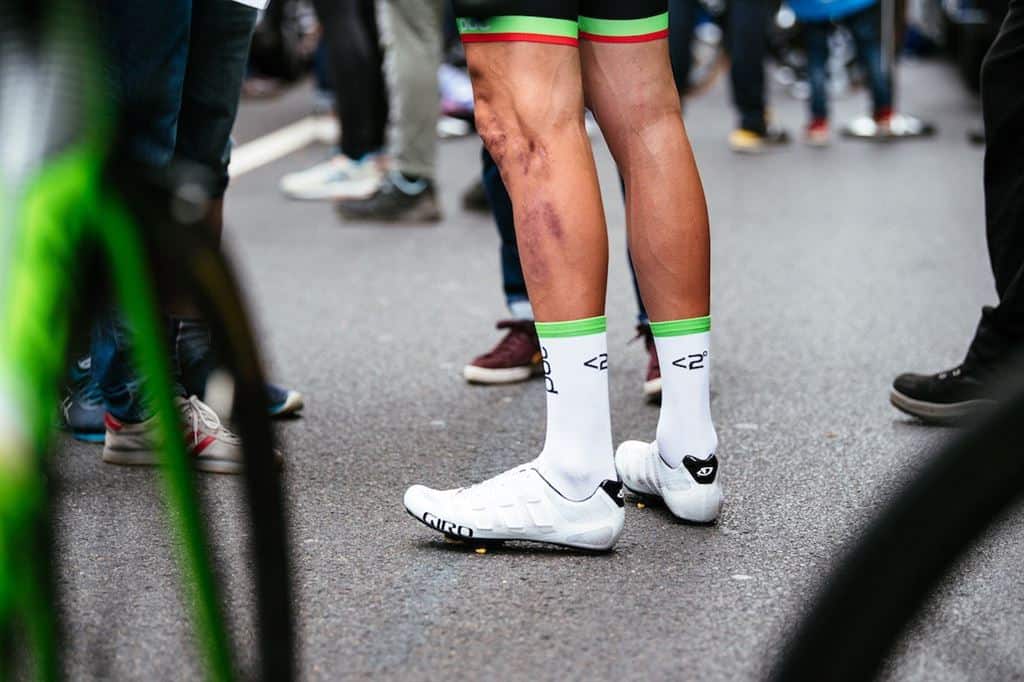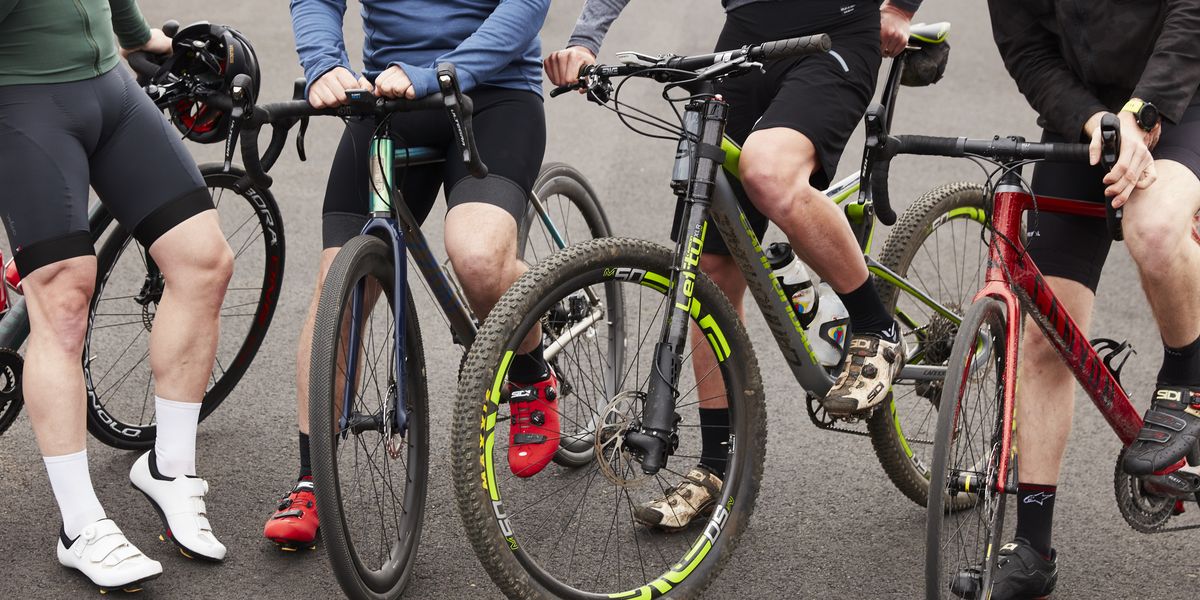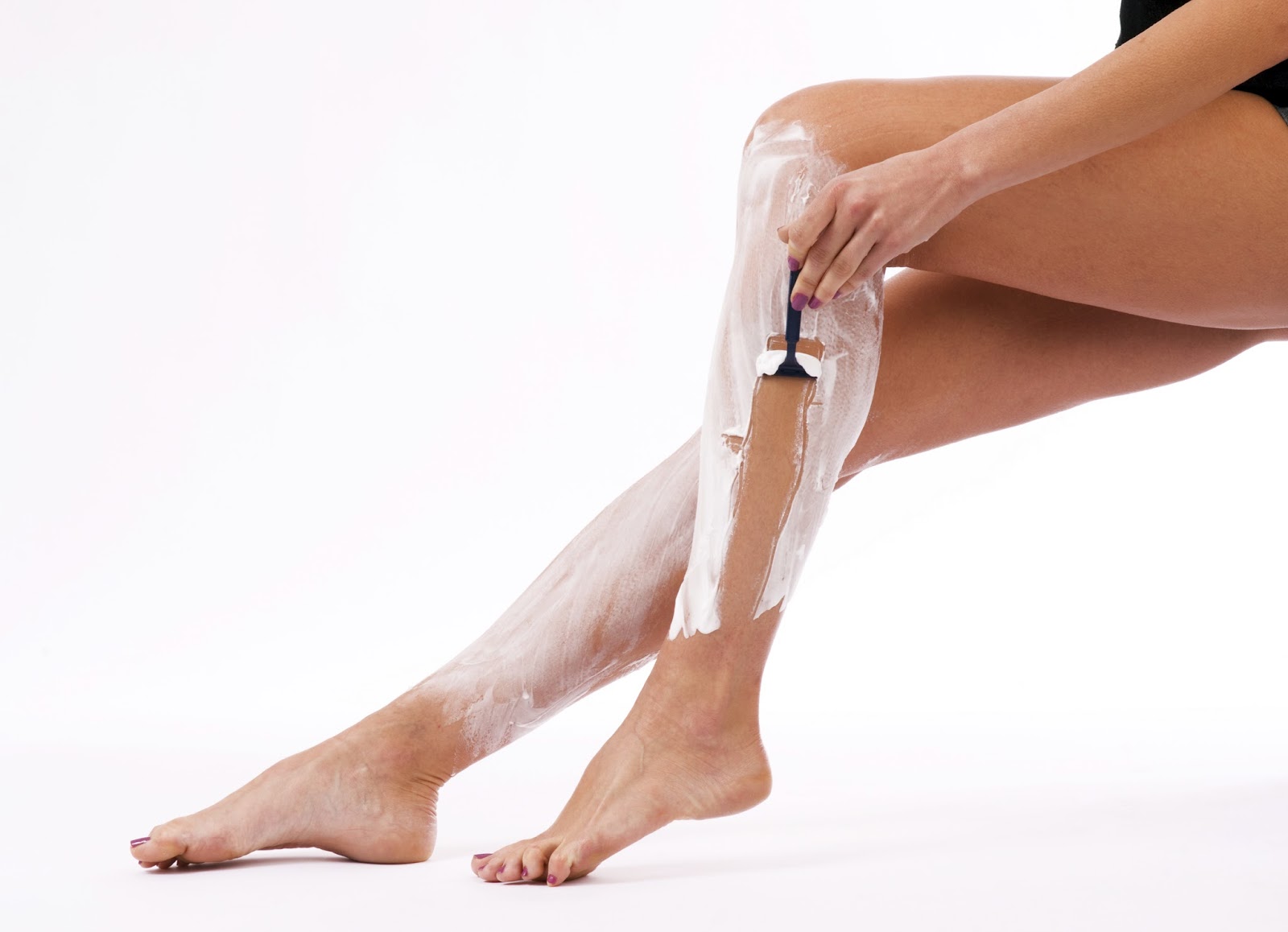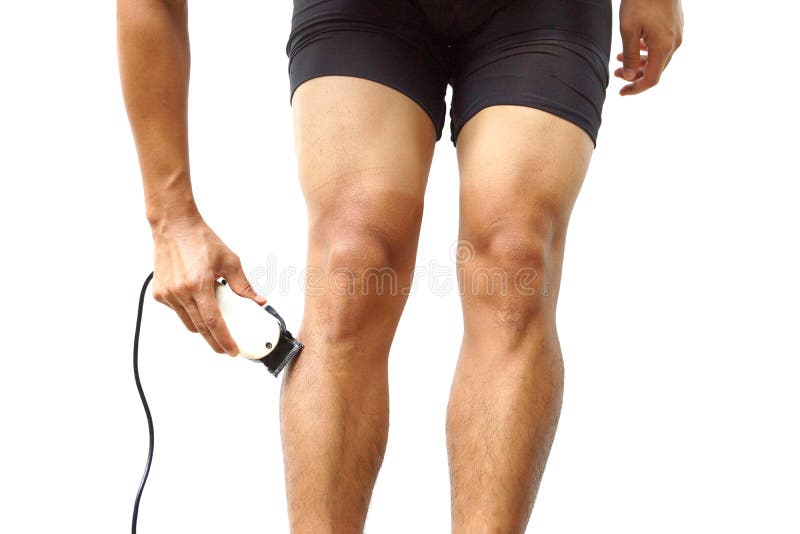Why Cyclists Shave Their Legs: Understanding the Tradition
The practice of shaving legs for cycling has been a long-standing tradition in the cycling community. The origins of this custom can be traced back to the early days of professional cycling, where riders sought to gain a competitive edge by reducing air resistance and improving aerodynamics. By removing body hair, cyclists believed they could slice through the air more efficiently, thereby gaining a slight advantage over their competitors.
While the scientific evidence supporting the benefits of shaving legs for cycling is limited, many professional cyclists swear by the practice. In fact, a survey conducted among professional cyclists revealed that over 70% of respondents shave their legs regularly, citing improved aerodynamics and reduced friction as the primary reasons.
However, the benefits of shaving legs for cycling extend beyond mere aerodynamics. Many cyclists also report improved muscle recovery and reduced muscle soreness after shaving their legs. This is likely due to the fact that shaving helps to remove dead skin cells and other debris that can accumulate on the skin, allowing for improved blood flow and reduced inflammation.
Despite the perceived benefits, shaving legs for cycling is not without its drawbacks. Many cyclists experience skin irritation, ingrown hairs, and razor burn, particularly if they have sensitive skin. Furthermore, the process of shaving can be time-consuming and requires regular maintenance to maintain smooth legs.
For these reasons, many cyclists are turning to alternative hair removal methods, such as waxing and sugaring, which can provide longer-lasting results with less maintenance. However, for those who prefer to shave, there are several tips and tricks that can help to minimize the risks and maximize the benefits.
For example, using a sharp razor and shaving cream can help to reduce the risk of razor burn and ingrown hairs. Exfoliating the skin before shaving can also help to remove dead skin cells and improve blood flow. Finally, applying a moisturizer after shaving can help to soothe and calm the skin, reducing the risk of irritation.
Ultimately, whether or not to shave legs for cycling is a personal choice that depends on individual preferences and needs. While the benefits of shaving legs for cycling are largely anecdotal, many cyclists swear by the practice and report improved performance and reduced muscle soreness. As with any aspect of cycling, it is essential to weigh the pros and cons and make an informed decision based on individual circumstances.
The Science Behind Shaving: How it Affects Cycling Performance
While the tradition of shaving legs for cycling is well-established, the scientific evidence supporting its benefits is limited. However, several studies have investigated the effects of shaving on aerodynamics, friction, and muscle recovery, providing valuable insights into the potential benefits of shaving legs for cycling.
One of the primary benefits of shaving legs for cycling is improved aerodynamics. A study published in the Journal of Sports Sciences found that shaving legs reduced air resistance by 0.6%, resulting in a 1.4% improvement in cycling efficiency. While this may seem like a small improvement, it can translate to significant gains in performance over the course of a long ride or competition.
Another benefit of shaving legs for cycling is reduced friction. When hair is present on the skin, it can create friction and drag, particularly when wearing tight-fitting clothing. By removing hair, cyclists can reduce this friction and improve their overall comfort and performance. A study published in the Journal of Applied Physiology found that shaving legs reduced friction by 12%, resulting in improved cycling efficiency and reduced muscle fatigue.
In addition to improved aerodynamics and reduced friction, shaving legs for cycling may also aid in muscle recovery. When hair is present on the skin, it can trap sweat and bacteria, leading to skin irritation and infection. By removing hair, cyclists can improve blood flow and reduce inflammation, aiding in muscle recovery and reducing the risk of injury.
Despite the potential benefits of shaving legs for cycling, it is essential to note that the scientific evidence is not conclusive. Many studies have methodological limitations, and more research is needed to fully understand the effects of shaving on cycling performance. Additionally, individual results may vary, and shaving legs may not be beneficial for all cyclists.
For cyclists looking to improve their performance, shaving legs may be worth considering. However, it is essential to weigh the potential benefits against the potential drawbacks, including skin irritation and ingrown hairs. By understanding the science behind shaving and taking steps to minimize the risks, cyclists can make an informed decision about whether shaving legs is right for them.
In conclusion, while the scientific evidence supporting the benefits of shaving legs for cycling is limited, several studies suggest that it may improve aerodynamics, reduce friction, and aid in muscle recovery. By understanding the science behind shaving and taking steps to minimize the risks, cyclists can make an informed decision about whether shaving legs is right for them.
How to Shave Your Legs for Cycling: A Step-by-Step Guide
Shaving your legs for cycling can seem intimidating, especially if you’re new to the sport. However, with the right techniques and precautions, you can achieve smooth, hair-free legs that will improve your performance and comfort on the bike. Here’s a step-by-step guide on how to shave your legs for cycling:
Step 1: Prepare Your Skin
Before you start shaving, make sure your skin is clean and exfoliated. Use a gentle cleanser and a loofah or exfoliating gloves to remove dead skin cells and help the razor glide smoothly. Rinse your legs thoroughly and pat them dry with a towel.
Step 2: Choose the Right Razor and Shaving Cream
Select a razor specifically designed for shaving legs, such as a razor with a curved blade and a comfortable handle. Choose a shaving cream that is designed for sensitive skin and is rich in moisturizers to help soothe and calm the skin.
Step 3: Shave in the Direction of Hair Growth
Always shave in the direction of hair growth, not against it. Shaving against the grain can cause ingrown hairs, razor burn, and skin irritation. Hold the razor at a shallow angle and use light, smooth strokes to shave your legs.
Step 4: Shave in Sections
Divide your legs into sections, such as the front and back of your thighs, calves, and ankles. Shave one section at a time, using long, smooth strokes to cover the entire area.
Step 5: Rinse and Moisturize
After shaving, rinse your legs thoroughly with warm water to remove any remaining hair and shaving cream. Apply a rich moisturizer to help soothe and calm the skin, reducing the risk of irritation and ingrown hairs.
Additional Tips:
Exfoliate your skin regularly to remove dead skin cells and help the razor glide smoothly.
Use a shaving cream that is rich in moisturizers to help soothe and calm the skin.
Avoid shaving over the same spot multiple times, as this can cause razor burn and skin irritation.
Consider using a razor with a built-in moisturizing strip to help soothe and calm the skin.
By following these steps and tips, you can achieve smooth, hair-free legs that will improve your performance and comfort on the bike. Remember to always prioritize your skin health and take steps to prevent common issues such as ingrown hairs and razor burn.
Common Mistakes to Avoid When Shaving Your Legs
Shaving your legs for cycling can be a bit tricky, and many cyclists make common mistakes that can lead to ingrown hairs, razor burn, and skin irritation. Here are some common mistakes to avoid when shaving your legs:
Shaving Against the Grain
One of the most common mistakes cyclists make when shaving their legs is shaving against the grain. Shaving against the grain can cause ingrown hairs, razor burn, and skin irritation. Always shave in the direction of hair growth, not against it.
Using a Dull Razor
Using a dull razor can cause more harm than good. A dull razor can lead to razor burn, ingrown hairs, and skin irritation. Make sure to change your razor blade frequently and use a sharp razor to get a smooth shave.
Not Exfoliating Before Shaving
Not exfoliating before shaving can lead to ingrown hairs and razor burn. Exfoliating helps to remove dead skin cells and helps the razor glide smoothly over the skin. Use a gentle exfoliating scrub or a loofah to exfoliate your skin before shaving.
Shaving Too Closely
Shaving too closely can cause razor burn and ingrown hairs. Make sure to shave in light, smooth strokes, and don’t press too hard on the skin. This will help to prevent razor burn and ingrown hairs.
Not Moisturizing After Shaving
Not moisturizing after shaving can lead to dry, irritated skin. Make sure to apply a rich moisturizer after shaving to help soothe and calm the skin. This will help to prevent dryness and irritation.
Additional Tips:
Use a shaving cream that is rich in moisturizers to help soothe and calm the skin.
Avoid shaving over the same spot multiple times, as this can cause razor burn and skin irritation.
Consider using a razor with a built-in moisturizing strip to help soothe and calm the skin.
By avoiding these common mistakes, you can get a smooth, safe shave that will help you perform at your best on the bike. Remember to always prioritize your skin health and take steps to prevent common issues such as ingrown hairs and razor burn.
The Best Razors and Shaving Creams for Cyclists
When it comes to shaving your legs for cycling, having the right tools can make all the difference. A good razor and shaving cream can help you achieve a smooth, safe shave that will help you perform at your best on the bike. Here are some of the best razors and shaving creams for cyclists:
Razors:
Gillette Mach3: This razor is a popular choice among cyclists due to its comfort and closeness of shave. It features a ergonomic handle and a triple-blade design that helps to reduce razor burn and ingrown hairs.
Schick Hydro Silk: This razor is designed for sensitive skin and features a hydrating strip that helps to soothe and calm the skin. It also has a ergonomic handle and a five-blade design that provides a close and comfortable shave.
Kiehl’s Calendula Shave Cream Razor: This razor is designed for sensitive skin and features a calendula-infused shave cream that helps to soothe and calm the skin. It also has a ergonomic handle and a three-blade design that provides a close and comfortable shave.
Shaving Creams:
Gillette Shaving Cream: This shaving cream is a popular choice among cyclists due to its rich, creamy texture and its ability to help reduce razor burn and ingrown hairs.
Schick Shaving Cream: This shaving cream is designed for sensitive skin and features a soothing and calming formula that helps to reduce razor burn and ingrown hairs.
Kiehl’s Calendula Shave Cream: This shaving cream is designed for sensitive skin and features a calendula-infused formula that helps to soothe and calm the skin.
Additional Tips:
Look for razors and shaving creams that are designed for sensitive skin to help reduce razor burn and ingrown hairs.
Consider using a razor with a built-in moisturizing strip to help soothe and calm the skin.
Always read the ingredient label and look for products that are free from harsh chemicals and artificial fragrances.
By using the right razor and shaving cream, you can achieve a smooth, safe shave that will help you perform at your best on the bike. Remember to always prioritize your skin health and take steps to prevent common issues such as ingrown hairs and razor burn.
Alternative Hair Removal Methods for Cyclists
While shaving is a popular method for removing hair from the legs, it’s not the only option for cyclists. There are several alternative hair removal methods that can be effective for cyclists, including waxing, sugaring, and depilatory creams. Here are some pros and cons of each method:
Waxing:
Waxing is a popular hair removal method that involves applying hot wax to the skin, then removing it with a cloth strip. This method can be effective for removing hair from the legs, but it can be painful and may cause redness and irritation.
Sugaring:
Sugaring is a similar method to waxing, but it uses a sugar-based paste instead of wax. This method is said to be less painful than waxing and can be more effective for removing hair from sensitive areas.
Depilatory Creams:
Depilatory creams are a chemical-based hair removal method that dissolves hair at the surface of the skin. This method is easy to use and can be less painful than waxing or sugaring, but it may not be as effective for removing coarse hair.
Pros and Cons:
Waxing and sugaring can be effective for removing hair from the legs, but they can be painful and may cause redness and irritation. Depilatory creams are easy to use and can be less painful, but they may not be as effective for removing coarse hair.
Additional Tips:
Consider using a combination of hair removal methods to achieve the best results.
Always follow the instructions carefully when using any hair removal method.
Exfoliate your skin regularly to help prevent ingrown hairs and improve the effectiveness of hair removal methods.
By considering alternative hair removal methods, cyclists can find a method that works best for them and their skin type. Remember to always prioritize your skin health and take steps to prevent common issues such as ingrown hairs and razor burn.
Shaving Legs for Cycling: Is it Worth the Effort?
Shaving legs for cycling is a popular practice among cyclists, but is it worth the effort? In this article, we’ll debate the merits of shaving legs for cycling, including the potential benefits and drawbacks, and discuss whether it’s worth the effort for recreational and competitive cyclists.
Benefits of Shaving Legs for Cycling:
Improved Aerodynamics: Shaving legs can improve aerodynamics by reducing air resistance, which can result in faster times and improved performance.
Reduced Friction: Shaving legs can also reduce friction between the skin and clothing, which can result in improved comfort and reduced irritation.
Improved Muscle Recovery: Shaving legs can also improve muscle recovery by reducing muscle soreness and inflammation.
Drawbacks of Shaving Legs for Cycling:
Pain and Discomfort: Shaving legs can be painful and uncomfortable, especially for those with sensitive skin.
Time and Effort: Shaving legs requires time and effort, which can be a drawback for busy cyclists.
Ingrown Hairs and Razor Burn: Shaving legs can also result in ingrown hairs and razor burn, which can be painful and uncomfortable.
Is it Worth the Effort?
For competitive cyclists, shaving legs may be worth the effort due to the potential benefits of improved aerodynamics and reduced friction. However, for recreational cyclists, the benefits may not outweigh the drawbacks.
Ultimately, whether or not to shave legs for cycling is a personal decision that depends on individual preferences and needs. If you do decide to shave your legs, make sure to follow proper techniques and take steps to prevent common issues such as ingrown hairs and razor burn.
Additional Tips:
Consider your individual needs and preferences before deciding to shave your legs.
Follow proper techniques and take steps to prevent common issues such as ingrown hairs and razor burn.
Consult with a healthcare professional or a cycling coach for personalized advice on shaving legs for cycling.
Maintenance and Upkeep: How to Keep Your Legs Smooth
Maintaining smooth legs is an essential part of shaving legs for cycling. Regular shaving, exfoliation, and moisturizing can help to keep your legs smooth and prevent common issues such as ingrown hairs and razor burn. Here are some tips and advice on how to maintain smooth legs:
Regular Shaving:
Regular shaving is essential to maintaining smooth legs. Shave your legs at least once a week, or more often if you have coarse hair. Use a sharp razor and shaving cream to help reduce friction and prevent ingrown hairs.
Exfoliation:
Exfoliation is an important step in maintaining smooth legs. Use a gentle exfoliating scrub or a loofah to remove dead skin cells and help prevent ingrown hairs. Exfoliate your legs at least once a week, or more often if you have dry or sensitive skin.
Moisturizing:
Moisturizing is essential to maintaining smooth legs. Use a rich moisturizer to help soothe and calm the skin, and prevent dryness and irritation. Apply moisturizer to your legs after shaving and exfoliating, and throughout the day as needed.
Additional Tips:
Use a shaving cream that is rich in moisturizers to help soothe and calm the skin.
Avoid shaving over the same spot multiple times, as this can cause razor burn and skin irritation.
Consider using a razor with a built-in moisturizing strip to help soothe and calm the skin.
By following these tips and advice, you can maintain smooth legs and prevent common issues such as ingrown hairs and razor burn. Remember to always prioritize your skin health and take steps to prevent common issues.








